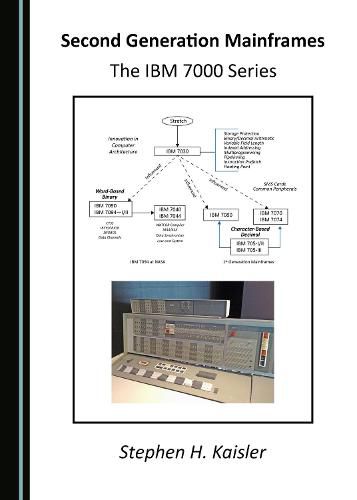Readings Newsletter
Become a Readings Member to make your shopping experience even easier.
Sign in or sign up for free!
You’re not far away from qualifying for FREE standard shipping within Australia
You’ve qualified for FREE standard shipping within Australia
The cart is loading…






Second Generation Mainframes: The IBM 7000 Series describes IBM’s second generation of mainframe computers which introduced new technology, new peripherals and advanced software. These systems were continuations of the instruction sets of the IBM 700 series with significant enhancements, but supported upwards compatibility that preserved customers’ investment in the earlier series. The use of magnetic cores, fast magnetic tapes and disks, and transistors yielded computation speeds that opened new domains for computation. Programming languages continued to be developed and enhanced, and new ones were developed for specific domains, such as SNOBOL, COBOL, and Macro Assemblers. Robust subroutine libraries for mathematical applications appeared. New operating systems provided many capabilities to programmers for data management and file systems, limited multiprocessing, timesharing, programming language support, and better error handling and control of peripherals. Early concepts in persistent file systems on magnetic disks were developed that changed the nature of job processing. The IBM 7000 series led the way in many innovative concepts that helped to establish IBM as the foremost manufacturer of computer systems. However, the diversity of the models put significant strain on IBM’s financial resources and development teams, which ultimately led to OBM’s development of the System/360 family of machines.
$9.00 standard shipping within Australia
FREE standard shipping within Australia for orders over $100.00
Express & International shipping calculated at checkout
Second Generation Mainframes: The IBM 7000 Series describes IBM’s second generation of mainframe computers which introduced new technology, new peripherals and advanced software. These systems were continuations of the instruction sets of the IBM 700 series with significant enhancements, but supported upwards compatibility that preserved customers’ investment in the earlier series. The use of magnetic cores, fast magnetic tapes and disks, and transistors yielded computation speeds that opened new domains for computation. Programming languages continued to be developed and enhanced, and new ones were developed for specific domains, such as SNOBOL, COBOL, and Macro Assemblers. Robust subroutine libraries for mathematical applications appeared. New operating systems provided many capabilities to programmers for data management and file systems, limited multiprocessing, timesharing, programming language support, and better error handling and control of peripherals. Early concepts in persistent file systems on magnetic disks were developed that changed the nature of job processing. The IBM 7000 series led the way in many innovative concepts that helped to establish IBM as the foremost manufacturer of computer systems. However, the diversity of the models put significant strain on IBM’s financial resources and development teams, which ultimately led to OBM’s development of the System/360 family of machines.